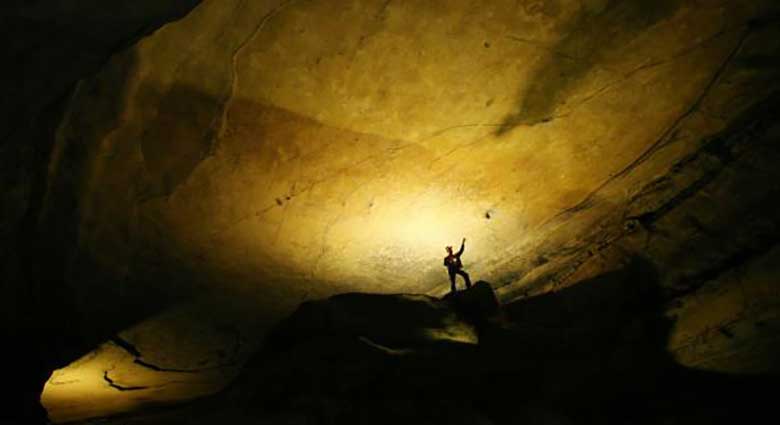Road Trip: Mammoth Cave National Park
Grand, gloomy and peculiar—words chosen to describe the world’s longest cave system by an early explorer. His name was Stephen Bishop and his remains are buried on site at Mammoth Cave National Park, which pulls in 2 million curious visitors each year.
Situated in southern Kentucky about halfway between Louisville and Nashville, the caverns twist and turn under the ground for 400 miles, and that’s just the mapped passageways. Explorers keep finding and charting their way deeper into the labyrinth and even more peculiar territory.
The cave was created millions of years ago after ancient waters left behind a layer of limestone capped by sandstone and shale. Erosion and rainwater then created hollowing effects. The result is a stunning and complex system of “mammoth” underground chambers and rivers, dramatic natural formations, and jaw-dropping geological wonders.
When To Go
There’s really not a bad time to visit Mammoth Cave. No matter the season, temps hover around 60 degrees underground. That said, summer sees the lion’s share of visits. The downside: contending with larger crowds. Upside: access to seasonal campgrounds, higher frequency of tours and the option to explore the above-ground area of the park.
What To Do
Fortunately, there are several options for cave tours. Visitors can pick from an easy .25 mile sight-seeing stroll (the Frozen Niagara Tour) to the free-climbing, knee-crawling, 6 hour Wild Cave Tour. One tour weaves you through miles of underground trails by flickering lantern light; one takes you up a 280-step staircase to check out high natural domes. Tour fees range from $5-$55, some specifying age and occasionally physical fitness requirements.
The Introduction to Caving Tour is popular with families. You’ll learn basic rules and techniques and gain some insight into the caving environment. If you want to capture great photos, the Frozen Niagara Photo Tour lets you weave through some of the more visually striking parts of the cave: Thanksgiving Hall, Rainbow Dome, Drapery Room and Onyx Colonnade.
Mammoth Cave guides are filled with extensive, intriguing facts, so pay attention to their stories! You might pick up bits of knowledge on your visit. One such bit: during the War of 1812, slaves mined the cave for a mineral called saltpeter that was used to make gunpowder for the war. Another bit? Critters like the eyeless cave shrimp are found in the darkest depths, where there’s no use for vision. Park guides are also known to flip off the lights on certain tours, enveloping groups in an eerie blackness only a cave can accomplish.
Things To Know
The cave temperature is described as “autumn weather” and it’s recommended you dress accordingly—a light jacket should do. Wear comfortable shoes that won’t skid, as you’ll likely do quite a bit of walking and portions of the cave can be wet or slippery. Despite the impressive 400 miles of charted underground territory, only 10 of those miles are available for the public to tour.
Don’t forget there are other attractions above the ground at Mammoth Cave National Park. You’ll find 70+ miles of outdoor trails for hiking or horseback riding and the Green River is open for fishing and canoeing. Mammoth Cave Campground is a quarter mile from the park’s Visitor’s Center, and if camping isn’t on the agenda, there’s also a hotel on site. The area surrounding the park showcases the beautiful, rolling hills southern Kentucky in known for, with several nearby small towns off I-65. Bowling Green is a half hour’s drive from Mammoth Cave and has plenty of restaurant and shopping options after a day of exploring.
Inspiration
